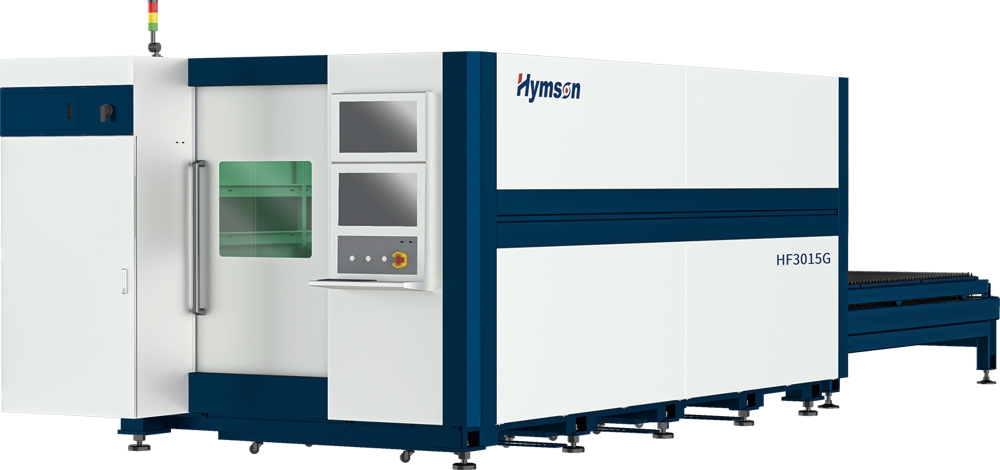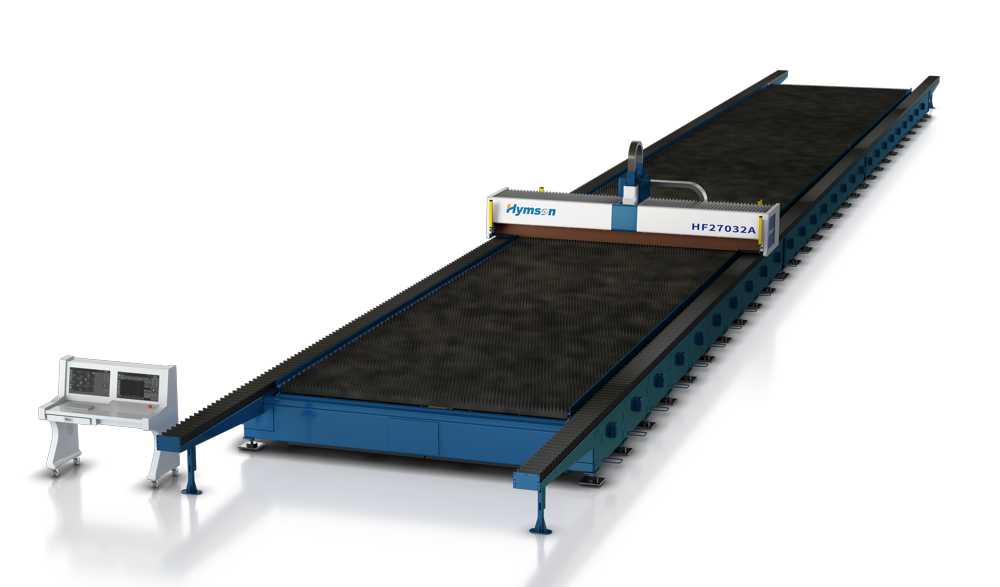Laser technology has become indispensable in modern manufacturing, offering unparalleled precision, speed, and versatility. Among the most widely adopted types of laser systems are CO₂ (carbon dioxide) lasers and fiber lasers. While both technologies have their unique strengths, selecting the right one for your specific application can directly impact productivity, operational cost, and product quality.
As a leading provider of industrial laser solutions, Hymson Laser helps global manufacturers determine the best-fit laser systems for their processes. In this article, we delve into the fundamental differences, strengths, and application scenarios of CO₂ and fiber lasers to help you make an informed investment decision.
Fundamental Working Principles
The Fundamental Working Principles of the CO₂ Laser and Fiber Laser are as follows:
CO₂ Laser
A CO₂ laser is a gas-based laser that generates infrared light with a wavelength of 10.6 μm. It works by electrically stimulating a gas mixture (CO₂, nitrogen, and helium) to emit light, which is then directed using mirrors and focused on the material surface.
Fiber Laser
Fiber lasers, in contrast, are solid-state lasers. They use diodes to pump light into a fiber-optic cable doped with rare-earth elements like ytterbium. The emitted laser beam has a wavelength of approximately 1.06 μm, which is highly effective for cutting and welding metals.
Material Compatibility
The Material Compatibility of the CO₂ Laser and Fiber Laser are as follows:
CO₂ Laser:
- Best suited for: Non-metallic materials such as wood, plastics, acrylic, glass, ceramics, textiles, and thin metal sheets
- Industries: Signage, packaging, textiles, and arts & crafts
- Limitation: Poor absorption on reflective metals; limited efficiency on thick metal
Fiber Laser:
- Best suited for: Reflective and non-reflective metals including stainless steel, carbon steel, aluminum, copper, and brass
- Industries: Automotive, aerospace, electronics, home appliances, construction, and medical device manufacturing
- Strength: High absorption rate for metals leads to greater efficiency and cleaner results
Hymson Laser specializes in high-performance fiber laser systems, particularly favored in metal-intensive industries like elevator manufacturing and EV battery production.

Cutting Speed and Precision
The Cutting Speed and Precision of the CO₂ Laser and Fiber Laser are as follows:
Fiber Laser:
- Faster cutting speeds, especially for thin to medium-thick metals
- High power density enables micro-fine cutting with minimal thermal distortion
- Enhanced energy conversion efficiency (25-30%)
CO₂ Laser:
- Slower cutting speeds on metals
- Better edge quality on certain non-metallic materials
- Requires precise focusing and alignment due to larger beam diameter
Case Example: In stainless steel processing for kitchen appliances, Hymson Laser's 6kW fiber laser cutting system outperforms traditional CO₂ machines by achieving up to 30% faster throughput and 20% lower energy consumption.
Operational Efficiency and Maintenance
The operational efficiency and maintenance comparison between CO₂ laser and fiber laser is as follows:
| Feature |
|
Fiber Laser | ||
|---|---|---|---|---|
| Energy Efficiency |
|
~25-30% | ||
| Maintenance |
|
Low maintenance, no moving parts | ||
| Operating Cost |
|
Lower (solid-state, less wear/tear) | ||
| Footprint |
|
More compact |
Hymson's fiber laser series is engineered for minimal maintenance, offering production managers peace of mind and higher system uptime.
Total Cost of Ownership (TCO)
The TCO of the CO₂ Systems and Fiber Systems are as follows:
CO₂ Systems:
- Lower initial equipment cost
- Higher long-term cost due to frequent maintenance, gas replacement, and higher energy use
Fiber Systems:
- Higher upfront investment
- Lower lifecycle cost due to energy efficiency and reduced maintenance
TCO Insight: Over a 5-year production cycle, Hymson fiber laser systems can result in up to 40% cost savings compared to CO₂ systems for metal applications.

Automation Compatibility
In the era of smart manufacturing, laser systems must integrate seamlessly with automation lines and digital controls. Fiber lasers are more adaptable to:
- CNC control systems
- Robotic arm handling
- MES and ERP systems for data integration
Hymson Laser provides full-system integration with robotic feeding, part unloading, and intelligent control systems to enable lights-out manufacturing.
Industry Application Scenarios
Automotive:
- Fiber lasers enable high-speed, high-precision welding and cutting of chassis components, battery enclosures, and body panels
Electronics:
- Clean, burr-free cuts on conductive materials like copper and aluminum
Elevator and Appliance Manufacturing:
- High-speed processing of stainless steel sheets with minimal material waste
Hymson's tailored laser cutting solutions have been successfully deployed in leading elevator factories across Asia and Europe, streamlining production and enhancing surface finish quality.
Decision Matrix: Which Should You Choose?
| Criteria | Best Option |
| Cutting non-metals | CO₂ Laser |
| Cutting thick metals | Fiber Laser |
| Minimal maintenance | Fiber Laser |
| Budget-constrained setups | CO₂ Laser |
| High-volume metal cutting | Fiber Laser |
| Advanced automation | Fiber Laser |
If your applications involve a broad range of non-metals, a CO₂ laser may suffice. However, for metal-dominant industries requiring precision, speed, and scalability, Hymson Laser’s fiber systems offer unmatched performance.
Conclusion
While both CO₂ and fiber lasers have their place in modern manufacturing, the right choice depends on your material types, production goals, and long-term investment strategy. As global industries shift toward automation and digitalization, fiber laser systems are emerging as the standard for metal processing.
Hymson Laser offers a full spectrum of both CO₂ and fiber laser solutions, backed by expert consultation, integrated automation, and localized service support. Contact us today to discover the ideal system for your application.
Share This Post:


